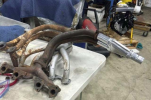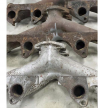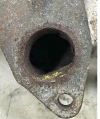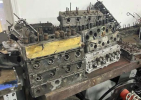jdoclogan
Platinum Level Sponsor
Welcome to the new SAOCA website. Already a member? Simply click Log In/Sign Up up and to the right and use your same username and password from the old site. If you've forgotten your password, please send an email to membership@sunbeamalpine.org for assistance.
If you're new here, click Log In/Sign Up and enter your information. We'll approve your account as quickly as possible, typically in about 24 hours. If it takes longer, you were probably caught in our spam/scam filter.
Enjoy.
Doc, I really like the looks of your 4 into 1 headers. Very nice and neat loooking.My 4 into 1
Yes, 38DCOE is rare. I had and may still have access to NOS in the box 38s. 38s are the same body as 40s except for 38 vs 40 outlet.Jerry,
Looking great.. also take note of the various choke sizes and jet size in each configuration for each run to compare changes
I note you have rare 38DCOE and your 40 setup are dellortto not weber so that may create slight variation across the 38/40/45 comparison
I put cast iron in pile.jdoclogan,
Would there be any possibility of including the cast iron exhaust manifold and down pipes with the 32/36 tests for a baseline reference? There are so many using that combo, there will probably be a bit more interest generated for people who might be considering a change.
I realize scheduling for any project like this can rapidly become "hectic."
Thanks for your consideration,

This is my professor question of the day. Curious, where did you get the "there are so many using that combo?"




